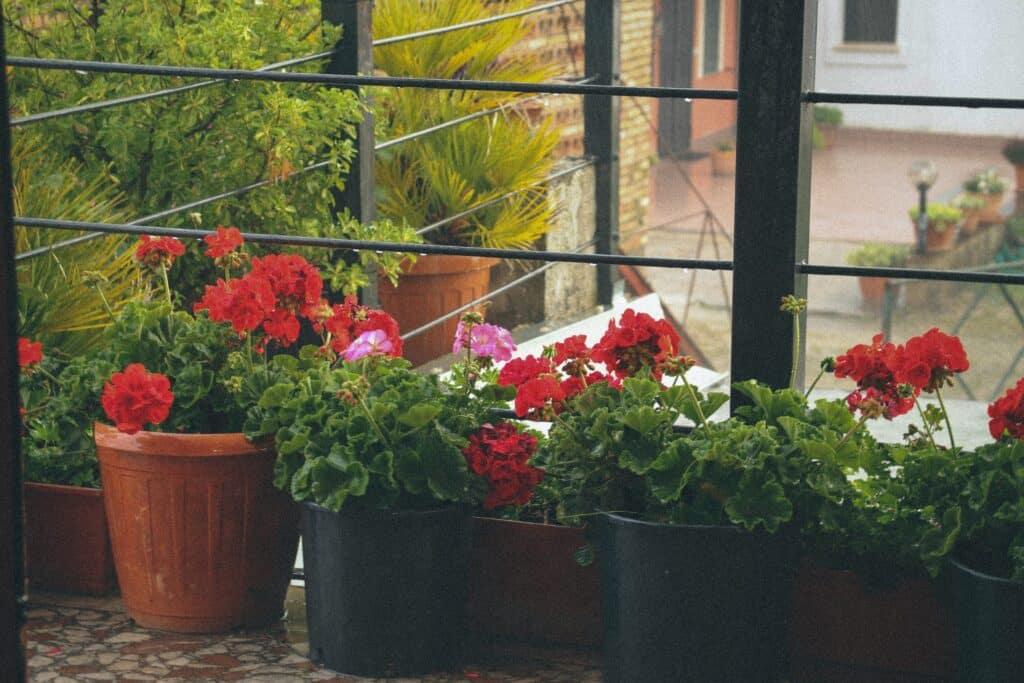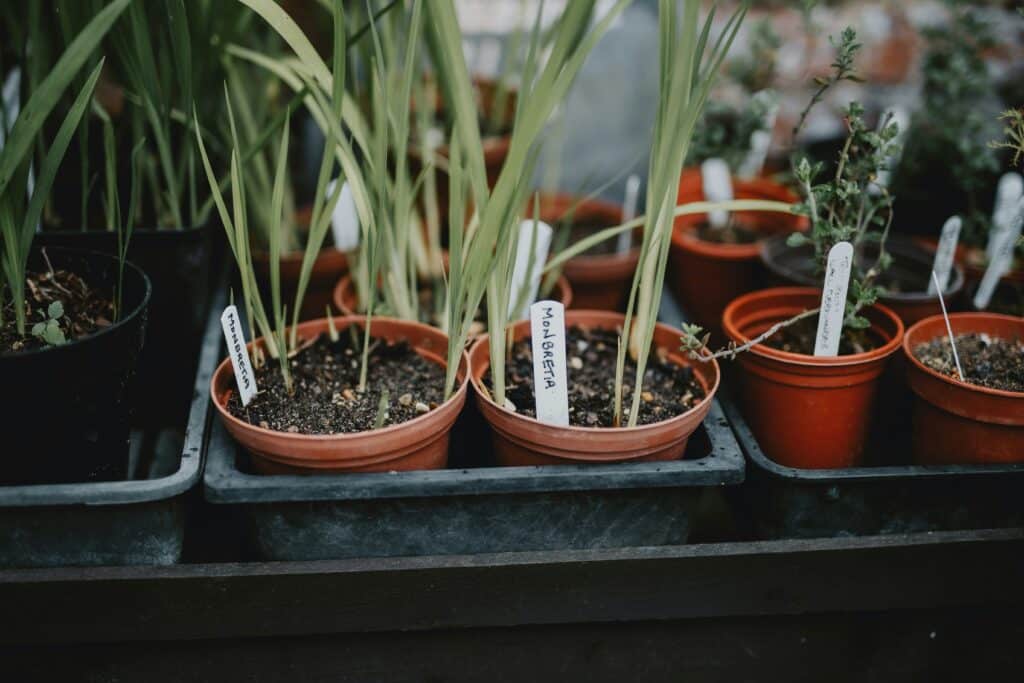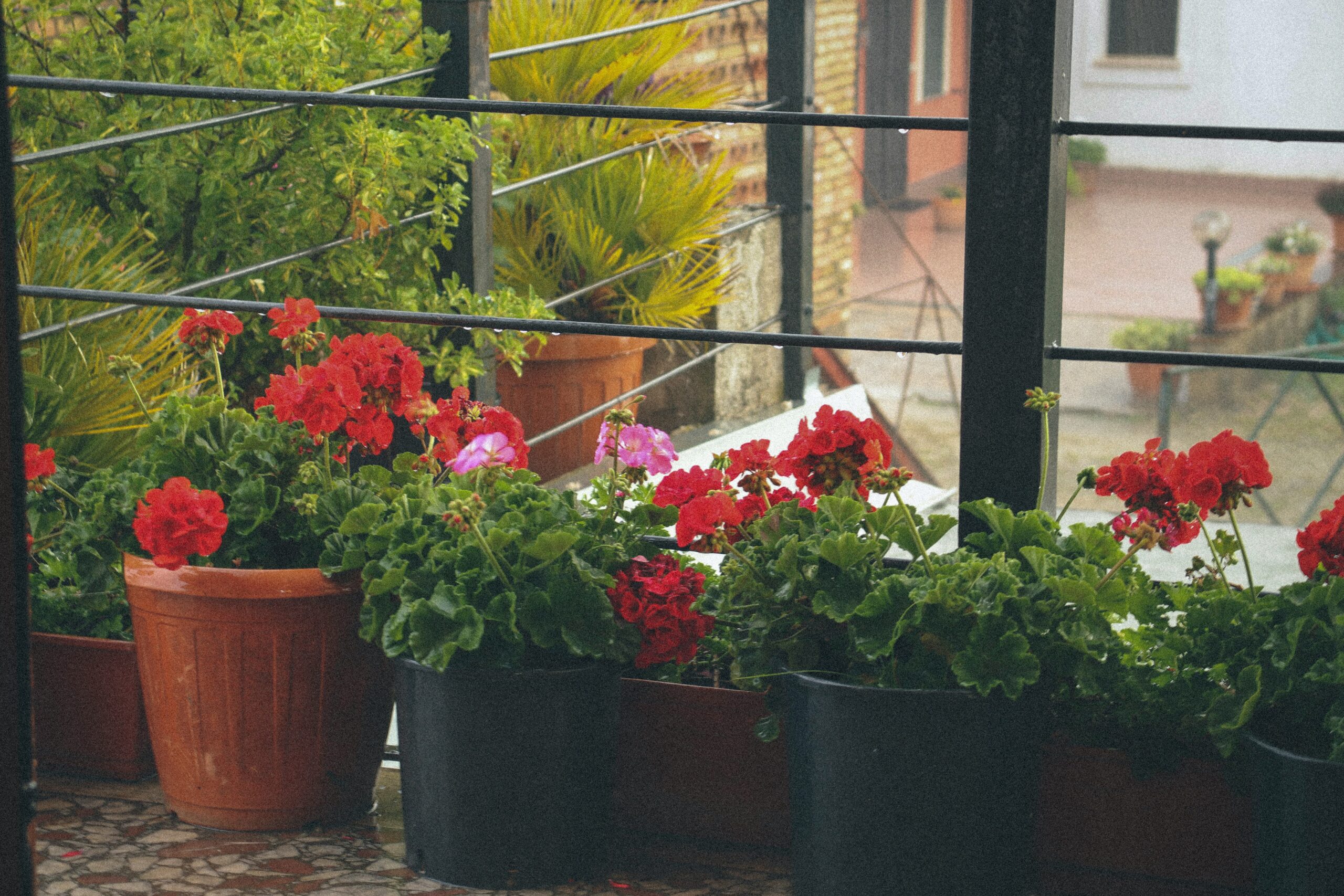Anúncios
This technique, used by savvy gardeners for centuries, promotes healthier plants, maximizes growth, and optimizes your small outdoor space. Whether you’re a seasoned green thumb or just starting out, our comprehensive guide on companion planting is sure to revolutionize your approach to urban gardening.

The concept of companion planting involves arranging different plant species in close proximity for mutual benefit. In this well-researched guide, we delve into the art and science of successful plant pairings, showing you how to create a thriving ecosystem right on your balcony. From pest control to enhanced growth and improved soil health, companion planting promises multiple benefits for your balcony garden.
Anúncios
Planting a garden is like painting a living masterpiece, and companion planting is a vibrant palette of possibilities. In this guide, you’ll find a wealth of practical tips, including how to choose suitable plant companions, pairings to avoid, and how to arrange your plants to maximize space and sunlight. Plus, we’ll share expert advice on caring for your plant companions to ensure successful growth.
So, whether you’re eager to grow a bountiful vegetable garden, a fragrant herb collection, or a stunning array of flowers on your balcony, our guide on companion planting will provide you with the knowledge and tools to succeed. Let’s embark on this gardening journey together, and watch your balcony garden reach its full potential with the help of companion planting.
Anúncios
Understanding Companion Planting
Companion planting is an ancient yet increasingly popular gardening technique that involves growing certain plants near each other to promote mutual growth and support. This strategy, rooted in both tradition and scientific observation, relies on the way plants interact with one another, whether it be through their root systems, growth habits, or natural chemical outputs. Some plants release substances from their roots or leaves that deter pests, others attract beneficial insects, and some even improve the soil’s nutrient profile, helping their neighbors grow more efficiently.
In the context of a balcony garden, where space is often limited and every pot or planter must serve multiple purposes, companion planting becomes an essential tool. It allows you to turn your compact outdoor area into a thriving mini-ecosystem. Instead of planting in isolation, you create plant communities that enhance each other’s health and productivity. With careful planning and a little experimentation, companion planting can transform your balcony garden from a collection of individual containers into a harmonious, interdependent space teeming with vitality.
Enhancing Soil Health Through Plant Partnerships
One of the most significant yet often overlooked benefits of companion planting is its impact on soil health. In traditional gardening, rotating crops and planting cover crops are standard methods to maintain soil quality. On a balcony, where soil is usually confined to containers and less subject to natural processes, companion planting can fill that role by introducing diversity into the soil ecosystem.
Some plants, like legumes, have nitrogen-fixing properties. They take nitrogen from the air and convert it into a form that other plants can absorb through their roots. By planting beans or peas alongside nitrogen-hungry plants like spinach or lettuce, you enrich the soil naturally, reducing the need for synthetic fertilizers.
Root structures also play a role. Deep-rooted plants like carrots or beets help to aerate the soil, creating pockets that allow water and nutrients to penetrate more deeply. Shallow-rooted herbs or greens planted nearby benefit from this improved soil structure without competing directly for the same nutrients.
Creating Microclimates with Smart Plant Pairings
Microclimates are small areas where environmental conditions differ slightly from the surrounding space. On a balcony, sunlight, wind, and humidity can vary from one corner to another. Companion planting allows you to use certain plants to influence the microclimate in beneficial ways.
For instance, tall or bushy plants can provide partial shade to more delicate species. Basil and lettuce often benefit from growing under the canopy of tomatoes or peppers, which shield them from harsh afternoon sun. Conversely, low-growing ground covers like creeping thyme or oregano help to maintain soil moisture by reducing evaporation and can act as living mulch.
Dense plantings can also serve as windbreaks. In exposed balconies, tall herbs such as rosemary or lavender can act as buffers, protecting more fragile plants behind them. This is especially valuable during transitional seasons when strong winds can quickly dry out containers or stress tender seedlings.
Pest Management Without Chemicals
One of the most immediate rewards of companion planting is the natural reduction of pests. Many herbs and flowers emit strong scents that confuse or repel insects that might otherwise destroy your plants. Marigolds, for example, produce a scent that deters nematodes in the soil and can also keep aphids and whiteflies at bay. When planted near vegetables like cucumbers or beans, they act as a natural pest repellent.
Aromatic herbs such as mint, sage, and thyme can also serve this function. Mint is especially effective against ants and aphids, but because it spreads aggressively, it’s best kept in its own container while still positioned near plants that need its protection.
Trap cropping is another form of companion planting that involves placing a plant that pests prefer near your main crops to draw their attention. Nasturtiums are a popular choice for this purpose, attracting aphids away from tomatoes and kale while also luring caterpillars away from brassicas.
Attracting Beneficial Insects
Not all insects are enemies in the garden. Some, like ladybugs, hoverflies, and bees, play a critical role in pollination and pest control. Companion planting can create a welcoming environment for these beneficial insects, increasing their activity in your garden and improving plant performance.
By interspersing flowering herbs such as dill, fennel, or coriander among your vegetables, you create a habitat that encourages pollinators and predatory insects. These plants not only provide nectar and pollen but also serve as nesting sites and hiding spots for helpful bugs.
Calendula, borage, and chamomile are particularly valuable companions for their ability to attract bees and hoverflies. Their bright flowers and extended blooming period make them a long-lasting asset in any container garden. In return, the presence of these pollinators can significantly boost yields from plants like strawberries, tomatoes, and zucchini.
Managing Growth Competition and Plant Compatibility
While the benefits of companion planting are substantial, it’s essential to remember that not all plants make good neighbors. Some species compete for the same resources or release allelopathic chemicals that inhibit the growth of others. For example, fennel is known to stunt the growth of most other garden plants and is best kept in its own pot away from the rest of your garden.
Sunflowers, though visually striking and useful for attracting pollinators, can also inhibit the growth of nearby plants through their root exudates. Similarly, garlic and onions, while great for repelling pests, may hinder the growth of beans and peas due to biochemical incompatibilities.
To avoid these issues, research the compatibility of your intended plant combinations. Start small, testing different pairings over the course of a season, and make observations about how each plant responds to its neighbor. By keeping a gardening journal, you can track successes and failures, gradually refining your strategy each year.
Maximizing Limited Space on Balconies
Companion planting is particularly suited for balcony gardening, where the space is confined and vertical gardening is often necessary. Clever use of hanging baskets, railing planters, and tiered shelves can increase the number of plant combinations you can experiment with.
One useful technique is interplanting, where a fast-growing crop is planted alongside a slower one. For instance, radishes, which mature quickly, can be sown between rows of slower-growing carrots. The radishes will be harvested first, freeing up space for the carrots to continue growing without disruption.
Another method is using the “three sisters” model adapted for containers. In the traditional method, corn, beans, and squash are grown together. Corn provides a natural trellis for beans, while beans fix nitrogen for the corn and squash, and squash acts as a ground cover to reduce weeds and conserve moisture. On a balcony, this can be scaled down using dwarf corn varieties, bush beans, and compact squash species.
By thinking vertically and diversifying your plantings, you create a dynamic, living arrangement that not only looks beautiful but also functions as a mini food forest.
Seasonal Planning for Companion Combinations
Different seasons bring different opportunities for companion planting. Cool-weather crops such as spinach, lettuce, and peas can be paired early in the spring with aromatic herbs like dill or cilantro, which thrive in cooler temperatures. As summer approaches, swap in warm-weather combinations like basil and tomatoes, or peppers and marigolds.
When planning for fall, consider pairing kale with garlic chives or planting beets near bush beans. Many leafy greens do well in the fall and can benefit from the insect-repelling properties of certain herbs as pest pressure increases toward the end of the season.
Succession planting, where one crop is replaced by another throughout the season, is made more effective by choosing pairs that naturally lead into each other. This keeps containers active all year round and helps prevent soil depletion from monoculture practices.
Long-Term Health Through Plant Diversity
Over time, companion planting contributes to the overall resilience of your garden. A diverse plant ecosystem mimics nature, where no species grows in isolation. This diversity reduces the chance of a single pest or disease wiping out your entire garden and supports a more robust soil microbiome.
Instead of relying on synthetic solutions, companion planting empowers you to build a garden based on ecological principles. It encourages you to observe, interact, and continuously learn from your plants, leading to a deeper connection with your outdoor space.
Selecting Suitable Plant Pairs
Choosing the right plant pairs for your balcony garden is crucial for successful companion planting. A good understanding of the plants’ needs, such as sunlight, water, and nutrients, can help in determining suitable pairs.
Tomatoes and Basil
For instance, tomatoes and basil are a classic companion pair. Basil helps to repel insects such as mosquitoes and flies that can be detrimental to tomatoes. Moreover, it is believed that basil can enhance the flavor of tomatoes.
Carrots and Chives
Carrots and chives also make a great pair. The strong scent of chives deters pests like carrot flies, which can severely damage the carrot crop.
Tips for Successful Companion Planting
Successful companion planting requires strategic planning. Here are some tips to consider.

Consider Plant Sizes and Growth Rates
Be mindful of the size and growth rates of your chosen plants. You don’t want a faster-growing plant to overshadow a slower-growing companion, as this could limit the latter’s access to sunlight and nutrients.
Rotate Crops Regularly
Crop rotation can prevent the buildup of pests and diseases that favor specific plant species. By changing the plants in your balcony garden periodically, you can maintain the health of your garden.
Observe and Adapt
Every balcony garden is unique, and what works for one may not work for another. Therefore, it’s important to observe your plants and adapt your companion planting strategy as needed.
Implementing Technology in Companion Planting
In this digital age, technology can play a significant role in optimizing your balcony garden’s companion planting strategy.
Gardening Apps
Various gardening apps provide information on suitable plant pairs, optimal planting times, and plant care tips. These apps can be a valuable resource for both novice and experienced balcony gardeners.
Automated Watering Systems
Balancing the water needs of different plants can be challenging. Automated watering systems can ensure that each plant receives the right amount of water based on its specific needs.
Smart Plant Sensors
Smart plant sensors can monitor conditions like soil moisture, temperature, and sunlight, allowing you to tailor your care to each plant’s needs.
Final Thoughts
Maximizing your balcony garden’s potential with companion planting requires a good understanding of different plant species, careful planning, and possibly, the help of technology. With the right approach, you can create a thriving, space-efficient balcony garden that not only provides fresh produce but also serves as a relaxing green space in your urban living area.
Conclusion
In conclusion, maximizing the potential of your balcony garden through companion planting is not only a practical approach to urban gardening but also an enriching endeavor. By carefully selecting compatible plants that can grow together in harmony, you can optimize the use of your limited space, increase your yield, and enhance the aesthetic appeal of your balcony.
Companion planting is beneficial in several ways. It encourages biodiversity, attracts beneficial insects, discourages pests, and promotes healthy growth among plants. Each plant in a pair or group offers something beneficial to its companions, whether it’s providing shade, attracting or repelling insects, or contributing essential nutrients to the soil.
However, successful companion planting requires careful planning and understanding of each plant’s needs, growth patterns, and compatibility with other plants. It’s crucial to conduct thorough research or consult an expert before starting your balcony garden to ensure that your plants will thrive together.
Remember that patience and continuous learning are vital in this process. You may encounter challenges along the way, but the rewards – a bountiful harvest, a beautiful view, and the satisfaction of nurturing life – make it all worthwhile.
Therefore, take the plunge and start your journey in companion planting today. The potentials of your balcony garden are waiting to be unlocked, and a lush, productive, and sustainable mini ecosystem is within your reach.

